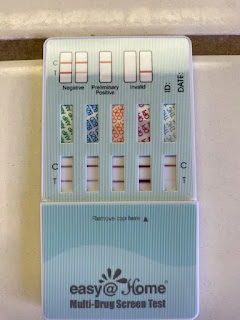THC Detoxing Time Frames: How long will it take you ?
THC Detoxing Time Frames: Intake, Weight, and Activity Levels
Introduction
Detoxifying the body from THC (tetrahydrocannabinol), the psychoactive compound found in marijuana, is a concern for many individuals, whether it's for employment drug tests, health reasons, or simply a desire to clear their system. THC detoxification isn't a one-size-fits-all process; it depends on various factors, including usage amount, body weight, and activity level. This article aims to provide insights into the time frames required for THC detoxification based on these variables.
Estimating the detection time of a drug in urine is a complex task because of the many factors that influence a compound’s elimination from the body. Additionally,technical aspects of the testing methods themselves also affect how long a drug will continue to be detected in urine
The pharmacological variables affecting the duration of detection include drug dose, route of administration, duration of use (acute or chronic), and rate of metabolism. Detection time is also dependent upon analytical factors including the sensitivity of the test (cutoff concentration) and the method’s specificity (the actual drug and/or metabolite that is being
detected).
Understanding THC Detoxification
Before diving into the time frames, it's essential to understand how THC is processed and stored in the body. THC is fat-soluble, meaning it is stored in fat cells throughout the body. Unlike water-soluble substances, you cannot simply flush THC out of your system by drinking water or sweating in a sauna. Instead, the key to detoxifying from THC is to burn it out of your fat cells through metabolic processes. intermittent fasting and CARDIO .
- Single Use
For individuals who have used marijuana just once, THC typically remains detectable in their system for about three days, regardless of their body weight or activity level. This is because the body can naturally eliminate THC over time.
- Overweight and Heavy Use
For those who are overweight and engage in heavy marijuana use (half a gram or more daily), the detoxification process can be significantly longer. Without making specific lifestyle changes, it may take up to three months or even longer to completely eliminate THC from their system. However, with regular cardio exercises, intermittent fasting, and a low-carb diet, this time frame can be shortened to about two months.
- Overweight and Low Use
Even with low usage (more than once a week but not daily), individuals who are overweight might require around a month to detoxify. If usage increases to twice a week or more, THC can accumulate in fat cells, extending the detoxification process.
- Average Weight and Heavy Use
For those with an average body weight but who use marijuana heavily (half a gram or more daily), the detoxification process typically takes around two months or longer, assuming no lifestyle changes are made.
- Average Weight and Low Use
If you have an average body weight and engage in infrequent marijuana use (once a week or less), THC typically clears your system within three days of use.
- Thin and Active with High Use
Individuals who are thin and physically active, even with high marijuana usage, have a more favorable detoxification timeline. Their active lifestyle helps burn off THC at the same rate it is being consumed. Depending on the specific usage and activity level, it might take just a few weeks or less to detoxify their system.
Thin and active / low use - Again any single use is average 3 days
Now obviously if you have significant use and a short time period your looking for HOW TO DETOX FAST well their are only a few key factors . No THC use , Cardio , low to NO carb diet, and intermittent fasting ( Ketosis ).
When it is close to test time you will start doing at home self test to see if your clean and may see different results at first if so read this to answer why.
IF you do not have time for proper detoxing then you should consider synthetic urine as a substitution . A Quality powdered synthetic such as Fake It has never failed been detected as synthetic and is easier to use than you may think. so if nervous of this idea just follow these steps and your get it in the cup at temp , its really all you need to do .
Conclusion
THC detoxification is influenced by multiple factors, including usage amount, body weight, and activity level. While there is no one-size-fits-all answer, understanding these variables can help individuals estimate their THC detoxification timeline more accurately. It's important to remember that complete detoxification might not be necessary for everyone, and in some cases, synthetic urine substitution may be a viable option. Additionally, always consult with a healthcare professional before embarking on any detoxification regimen, especially if you have underlying health concerns.








